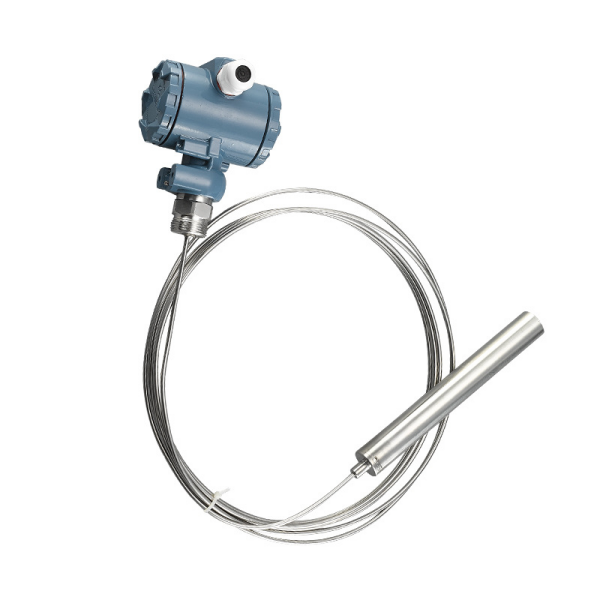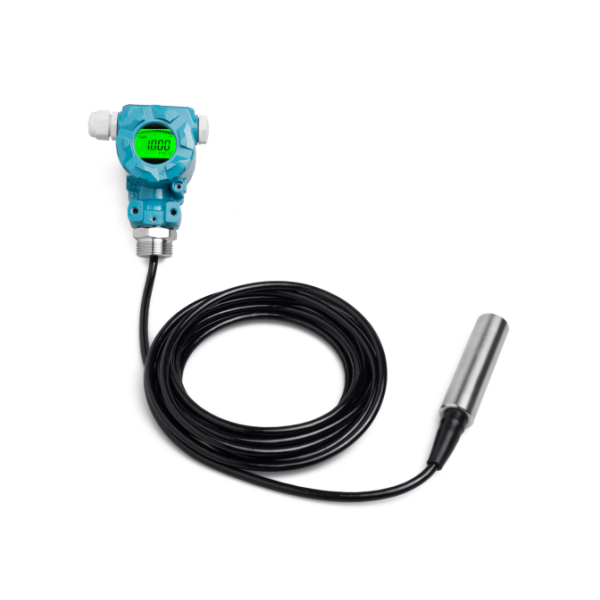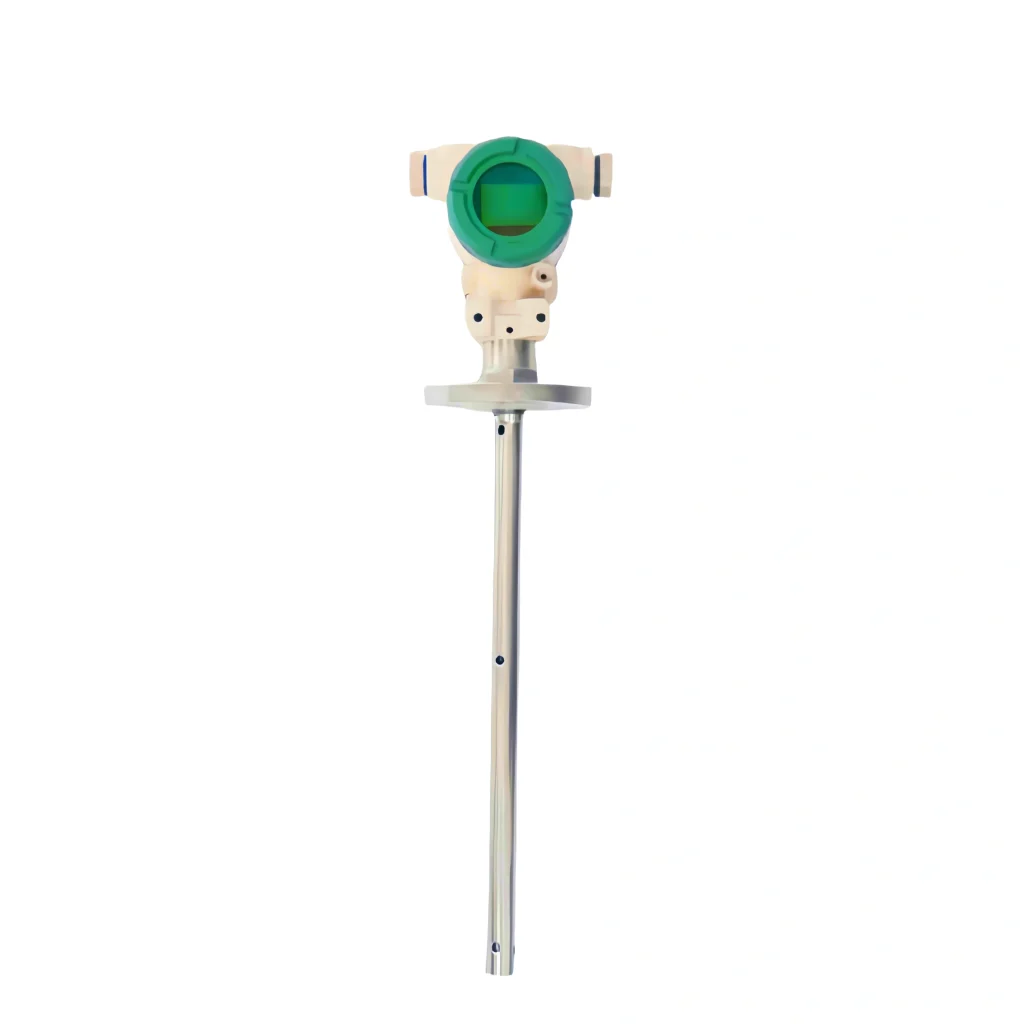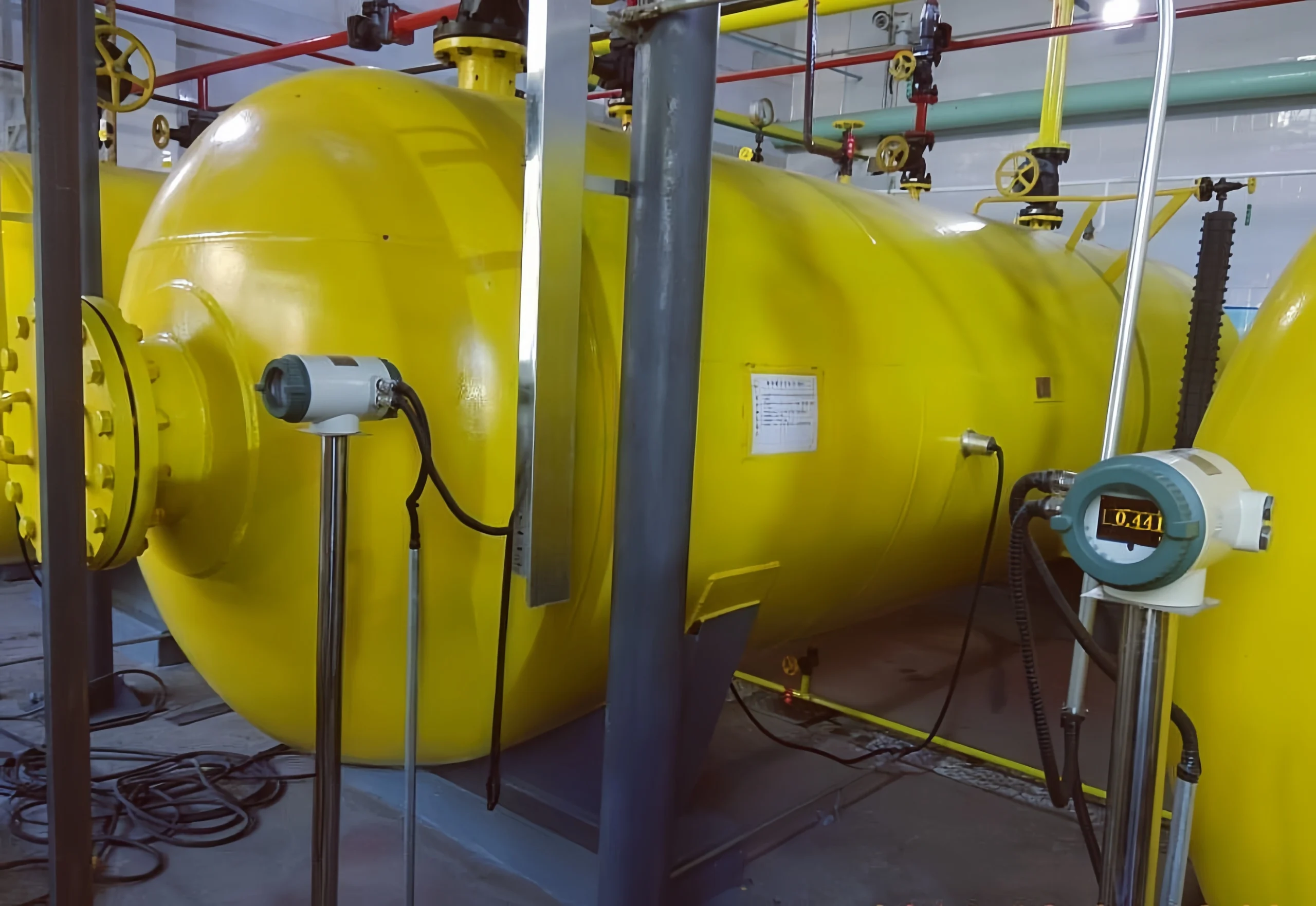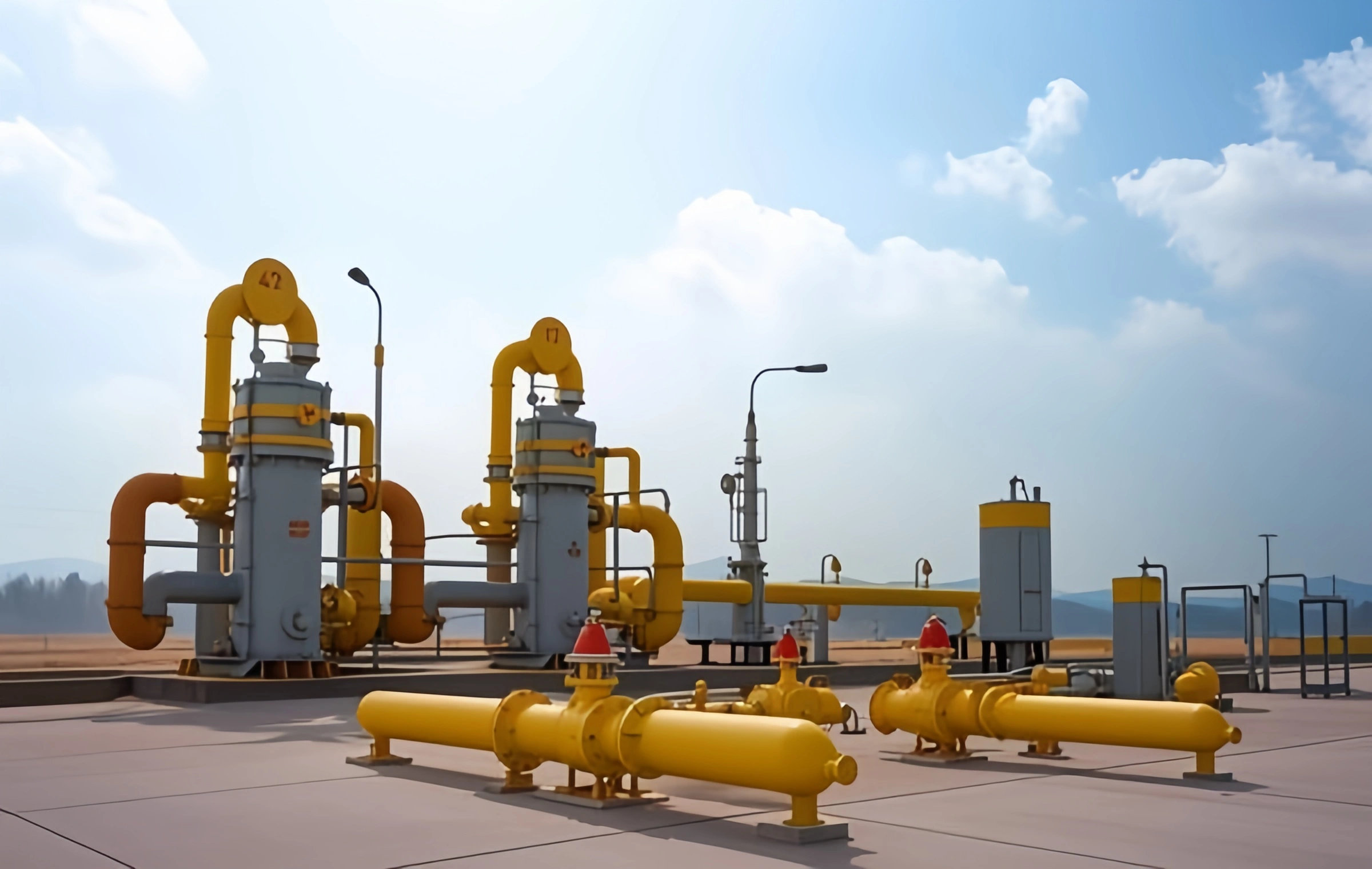Underground storage tanks are an important type of storage facility. They can be used to store energy, fuel, and water. They offer good sealing, safety, and economy, and help reduce environmental pollution. However, measuring liquid levels in underground storage tanks requires consideration of various challenges and solutions aimed at ensuring the safety and processing efficiency of industrial processes.
The post focuses on how to measure the liquid level in underground tanks to facilitate your underground tank management. We hope this is helpful.
What is an Underground Tank?
An underground liquid tank is a storage container. Its highest liquid level is below the nearby ground level, and the tank body is generally buried underground. Underground tanks are mainly used to store oil and water.
Underground tanks are mostly constructed using steel plates or composite materials of steel plates and reinforced concrete. Because the entire tank is buried underground, this ensures the temperature stability of the stored medium and reduces evaporation losses. However, these tanks have relatively high investment costs, long construction periods. They are more difficult to construct. They are not as convenient to operate and maintain as aboveground tanks.
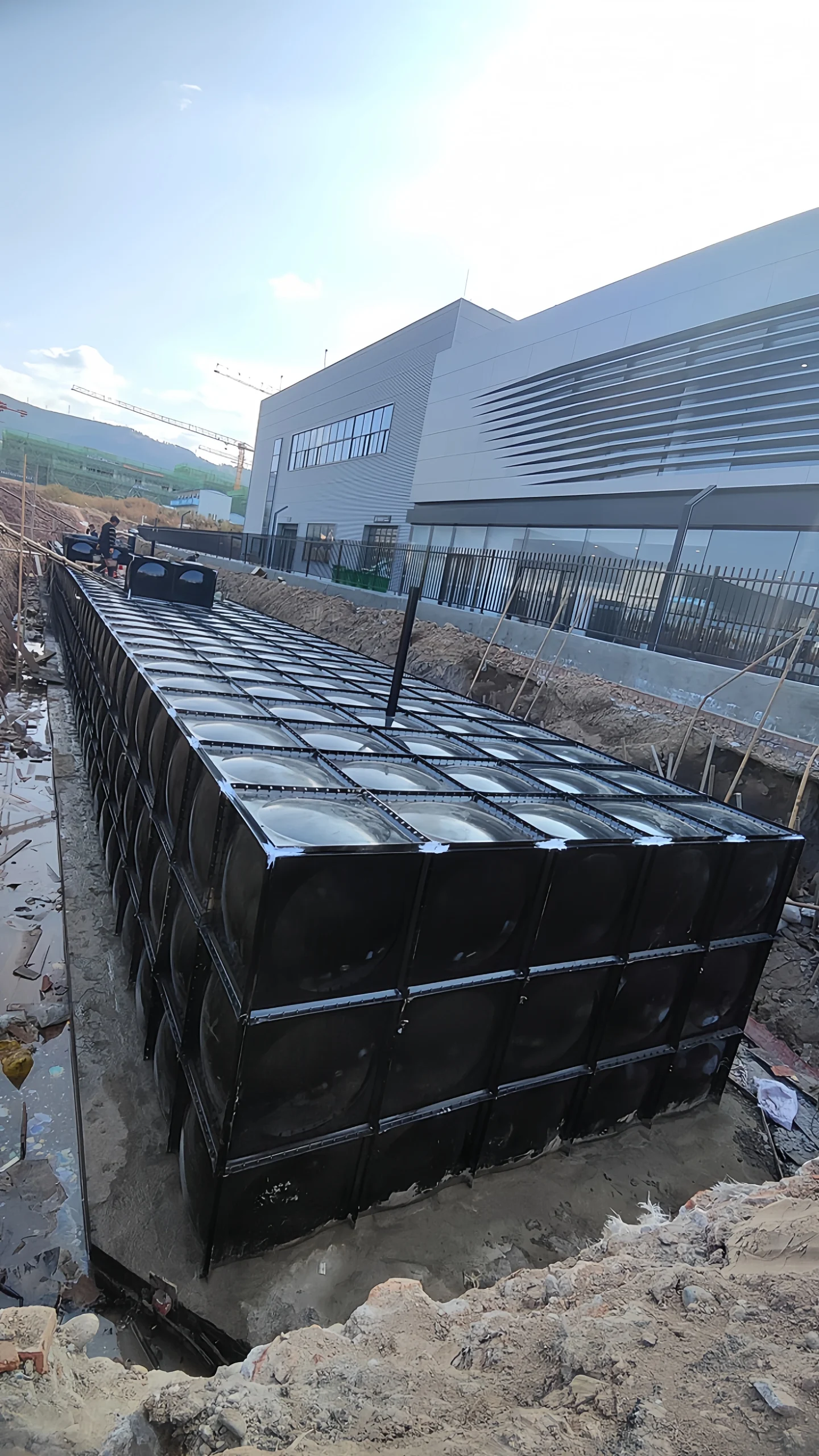
The Importance of Underground Storage Tank Level Measurement
Ensuring Production Safety
The primary function is to monitor the liquid level in the tank in real time to prevent overflow or emptying. This is especially important in the storage of hazardous chemicals.
Optimizing Production Processes
In many industrial production processes, level control directly impacts production stability and efficiency. In the petrochemical industry, changes in the liquid levels of raw materials and finished products in storage tanks directly affect the adjustment and control of production processes. Operators can adjust parameters such as feed rate and heating temperature based on the liquid level.
Extending Equipment Lifespan
Liquid level control is not only related to the precise distribution of liquids but also to the lifespan of storage tanks and other equipment. When the liquid level in the tank is too low or too high, equipment may experience accelerated wear due to frequent fluctuations in workload.
Enhancing Data Acquisition and Automated Control Capabilities
The underground tank level monitoring system has remote monitoring and data acquisition capabilities. Through connection with automated control systems, industrial production lines can achieve more precise automated control. It can improve production efficiency and accuracy. In some advanced petrochemical production processes, direct linkage with PLCs or DCS can be used to adjust liquid levels in real time.
Challenges in Measuring Underground Tank Levels
Because the tanks are buried deep underground, many challenges arise when measuring liquid levels:
- Complex media interference: Some media contain foam, vapor, or high adhesion;
- Tank structural limitations: Limited space, internal obstructions;
- Limitations on level meter installation: Level meters can only be installed through a top opening. Alternatively, a short pipe can be installed on top, followed by the level meter;
- Environmental factors: High humidity, strong corrosiveness, rapid temperature changes;
- High safety requirements: Flammable and explosive media require dual-principle level sensors;
- Non-contact measurement signal attenuation: The deep burial of the tank leads to signal attenuation.
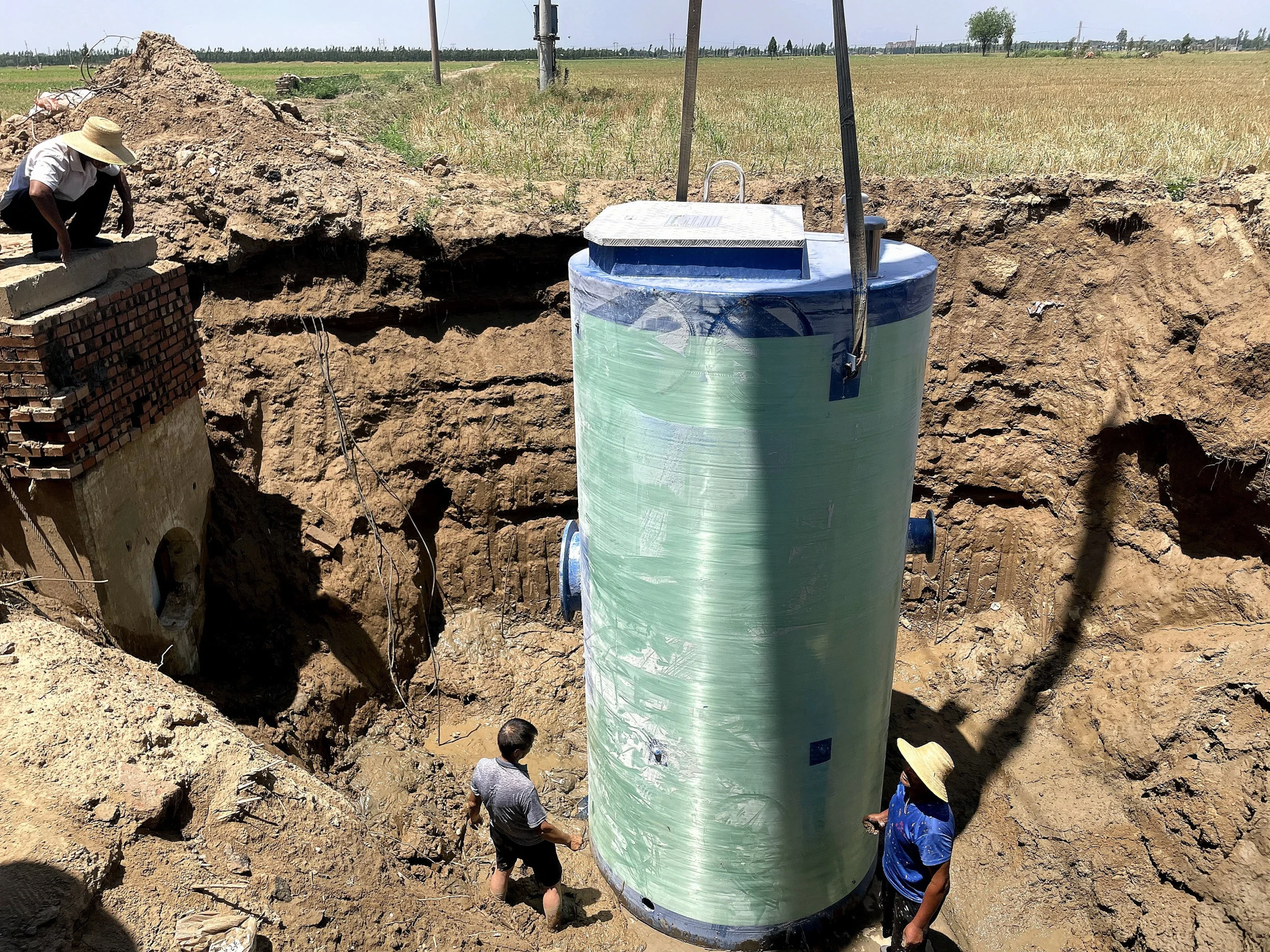
How to Measure the Level in an Underground Tank?
Because the container being measured is located below the surface. Only top-mounted level display products can be selected. We can choose from float level meters, top-mounted magnetic level meters, submersible level transmitters, magnetostrictive level meters, radar level meters, and ultrasonic level meters. Of course, no product can be used directly. The choice of level meters must be determined based on the on-site installation environment and the measured medium.
Common level measuring instruments for tanks include the following types:
Ultrasonic Level Meters
- For continuous or unit-based level measurement of corrosive, highly viscous, and toxic liquids, ultrasonic level meters are suitable for open tanks without water vapor or foam.
- They must not be used in vacuum containers. They are not suitable for level measurement of liquids containing air bubbles or solid particles.
- Ultrasonic level meters are not suitable for locations where the measured medium is prone to condensation. And they may hinder the normal operation of the level meter.
Radar Level Meters
- For continuous level measurement or metering of crude oil, refined oil, liquefied petroleum gas, liquefied natural gas, and other media in large fixed-roof tanks, floating-roof tanks, and spherical tanks, non-contact or guided-wave radar level meters are recommended.
- For containers with agitators or applications requiring large flow rates, non-contact radar level meters are recommended.
- For boiling conditions involving steam and turbulence, guided wave radar level meters are recommended.
- For liquid interface measurements, guided wave radar level meters can be used.
- Radar level meters are not suitable for storage tanks with internal obstructions that affect microwave propagation.
- For liquids experiencing boiling or significant disturbances, or for media with low dielectric constants, waveguides (stationary tubes) and other measures should be used to ensure measurement accuracy.
- Some radar level meters may experience probe droplet formation. It causes fluctuations in the reading when used in tank level measurement chambers.
Read More about:Radar Level Transmitter Vs Ultrasonic Level Transmitter—for Level Measurement
Float/Magnetostrictive Level Meters
Magnetostrictive level meters use waveguide wires as their signal unit. They offer high precision, stability, and reliability. They can simultaneously measure multiple parameters, including level, interface, and temperature. They are unaffected by the physical and chemical states of the measured medium. For example, it is affected by dielectric constant, foaming, etc. It is resistant to corrosion, toxicity, and polluted environments. But it is not suitable for viscous or crystalline media such as tar and oil residue.
It is used in chemical storage tanks and water pools without agitators. In engineering projects, due to broken waveguide wires or poor sealing of cables at the instrument port during transportation or installation, the indication may not work.
Submersible level meters are commonly used for clean liquids and open water pools at normal pressure.
- They have a lower cost and are easy to install.
- They are not suitable for dirty media. They are prone to clogging the probe.
Read More about: Submersible Level Transmitter – Level & Pressure Measurement
RF admittance level meters
It utilizes the principle of microwaves for level detection. The high-frequency admittance wave encounters a change in impedance in the medium. The level is determined based on the reflection coefficient. The higher the level, the greater the impedance.
Features:
- Unaffected by material buildup;
- Can measure temperatures up to 800 degrees Celsius;
- Suitable for high-pressure, high-viscosity, corrosive liquids, slurries, and powders;
- Can measure interfacial levels;
- Not limited by density differences;
- Best suited for conductive media and metal tanks;
- Special grounding is required when using on non-metallic tanks and non-conductive media.

How to Measure the Level in an Underground Oil Tank?
Generally, flammable liquids such as diesel are stored in underground tanks where pressure and temperature requirements are not stringent. In this case, purely mechanical level meters offer certain explosion-proof safety advantages, such as top-mounted magnetic level meters and magnetostrictive level meters.
Alternatively, you can choose non-contact level meters, such as radar or ultrasonic level meters. It’s important to note that if the measurement capacity is small, a guided-wave radar level meter should be selected for more accurate results.
- Mechanical Level meters: Top-mounted magnetic level meters have poor measurement accuracy and require manual recording.
- Contact Intelligent Level meters: Intelligent level meters feature a display, built-in temperature and pressure compensation, and high measurement accuracy.
- Non-contact Level Meters: Non-contact level meters include ultrasonic and radar level meters. They are unaffected by the medium in the tank.
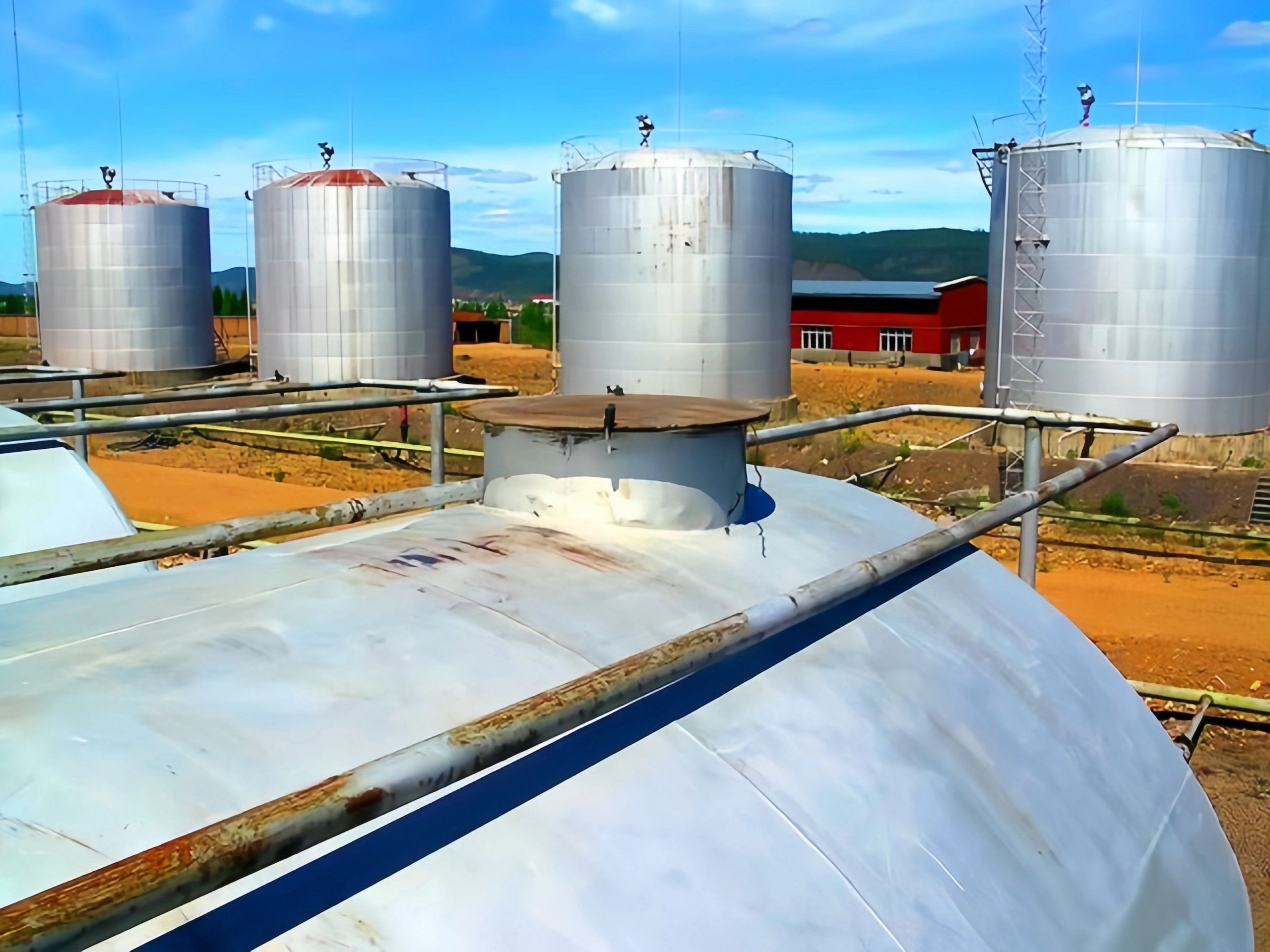
How to Measure the Level in an Underground Water Tank?
Sino-Inst commonly uses instruments for measuring the level of underground water tanks. It includes submersible level sensors, float level sensors, and magnetostrictive level sensors. Of course, we also offer non-contact measurement devices, such as split-type radar level sensors and ultrasonic level sensors.
The core principle of a submersible level meter
It is the direct proportionality between hydrostatic pressure and liquid level: The hydrostatic pressure at a point in a liquid is equal to the product of the liquid density (p), gravitational acceleration (g), and the vertical height (h) from that point to the liquid surface, i.e.,
P = pgh.
The sensor probe is submerged in the liquid. By measuring the hydrostatic pressure acting on the probe, combined with the liquid density and gravitational acceleration (usually a constant), the liquid level (h = P/(pg)) can be calculated.
Submersible level sensors can measure not only the level of underground water tanks but also the level of water wells. They can also be customized with various materials to measure many other media.
Read more about:
Wastewater Level Measurement Comprehensive Guide
How to Measure River Water Level?
Tank Level Switch – Easy to Control Level
Industrial Water Tank Water Level Measurement
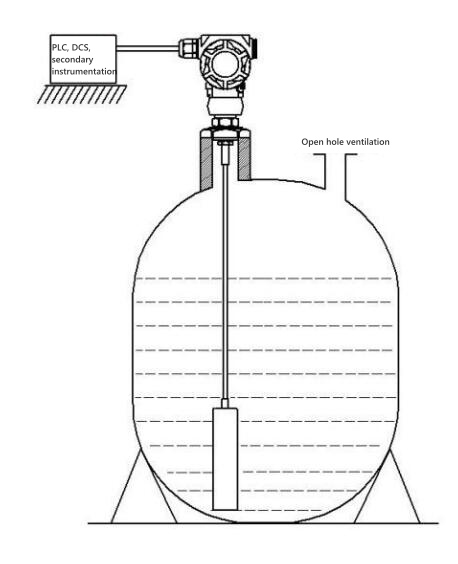
Underground Tank Liquid Level Measurement System
An Underground Tank Liquid Level Measurement System is a leak detection system. It detects leaks by tracking the fuel level in the underground tank over a period of time. The system also provides measurement data on fuel level, volume, pressure, and temperature, and issues high and low fuel level alarms. You can configure the data to your specific needs for better data management.
How to obtain this data: If you need to obtain data on liquid level, pressure, and temperature, you can add pressure and temperature sensors. When these sensors are connected to a volume recorder, it can obtain this data.
Sino-Inst Featured Level Measurement Methods
How to Check the Underground Propane Tank Level?
The commonly used measurement methods for underground propane tanks are ultrasonic level meters and radar level meters. They are externally mounted.
Externally mounted level meters include ultrasonic level gauges and radar level meters:
Principle: Sonar waves or radar waves are emitted by probes on the external wall of the tank, and the reflected signals from the liquid surface are detected to calculate the liquid level.
Advantages:
- Non-contact measurement: No drilling required, no tank cleaning or open flame needed during installation, suitable for underground tank retrofitting.
- High accuracy: Ultrasonic level gauges can achieve accuracy up to ±3mm, and radar level meters can achieve millimeter-level measurement.
- Safe and explosion-proof: No electrical signal on site, intrinsically safe.
Which method of taking the level in the tank is the most accurate?
According to Sino-Inst's experience in level measurement, radar level meters are the most accurate method for measuring tank levels. Radar level gauges can achieve an accuracy of ±1mm. Magnetostrictive level gauges can achieve 0.02%.
What is the most accurate water level sensor?
Because water is a relatively simple medium, many level sensors can measure water. However, the most accurate water level sensor is the hydrostatic level sensor. It can measure water depths up to 300m and is suitable for most working conditions.
What is the unit of tank level?
Large water tanks generally use meters as the primary unit of measurement for level measurement. Underground oil storage tank level measurement requires consideration of multiple unit conversions. Conversion of liquid level measurement units requires accurate conversion formulas. Different liquid level measurement units may have decimal accuracy issues during conversion.
Digital liquid level gauges display measurement units intuitively and are easy to read. Mechanical liquid level gauge readings may involve traditional liquid level measurement units. Temperature changes during liquid level measurement can affect the accuracy of unit conversions. Pressure changes also affect liquid level measurement unit conversions.
Sino-Inst's volumetric or paperless recorders allow you to flexibly adjust the liquid level unit. They offer numerous functions, including data analysis, data alarms, and data management.
How to measure level in a tank?
Common instruments for measuring tank liquid levels include ultrasonic level sensors, radar level sensors, submersible level sensors, and float level sensors.
In short, underground tanks are very complex. When measuring underground tanks, we need to choose the appropriate measurement method based on our specific operating conditions. If you still have questions about measuring underground tanks, I suggest you contact us immediately.
Sino-Inst offers various measurement methods for underground tanks. We also have highly professional staff to provide you with free technical support.

